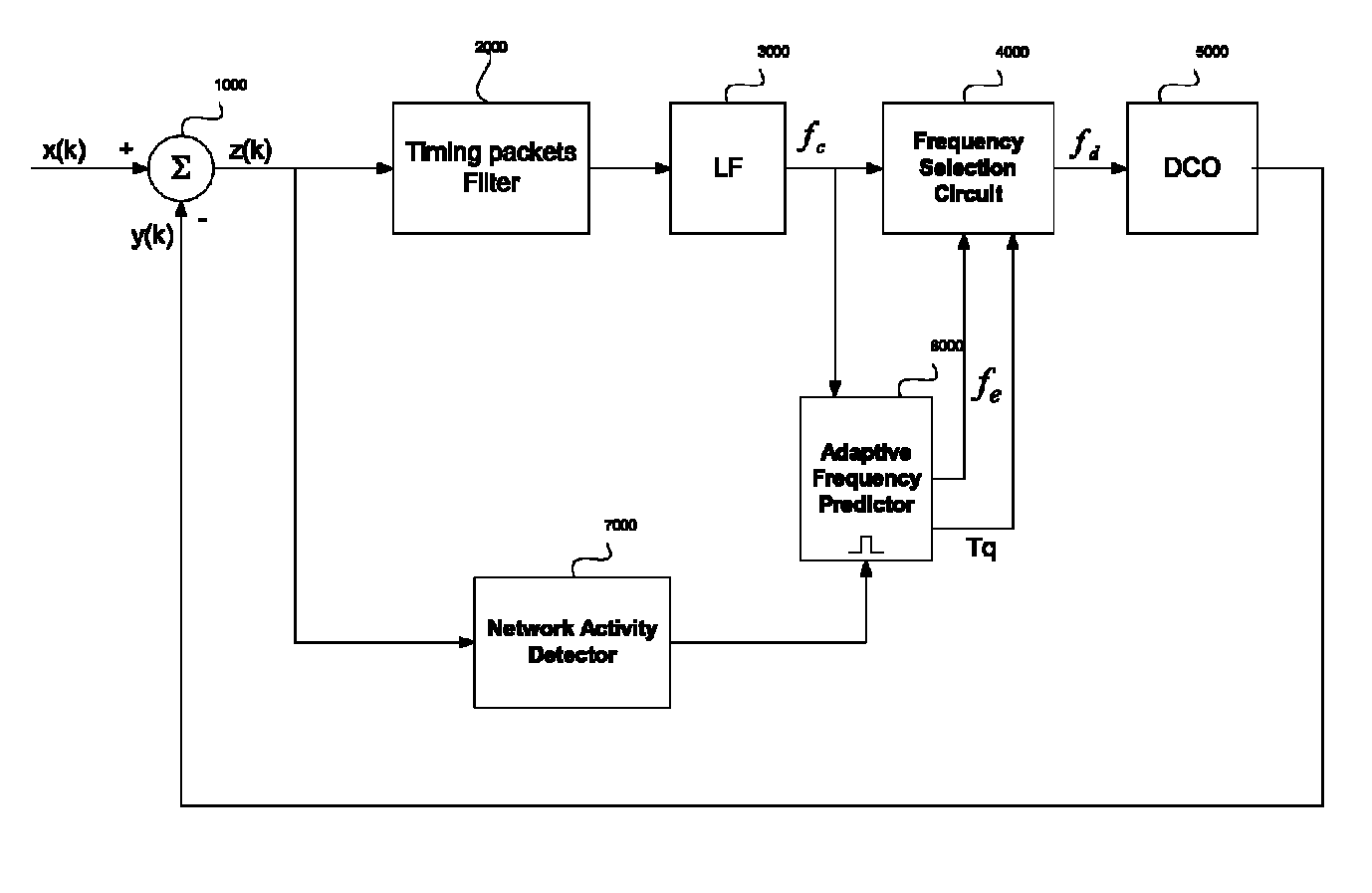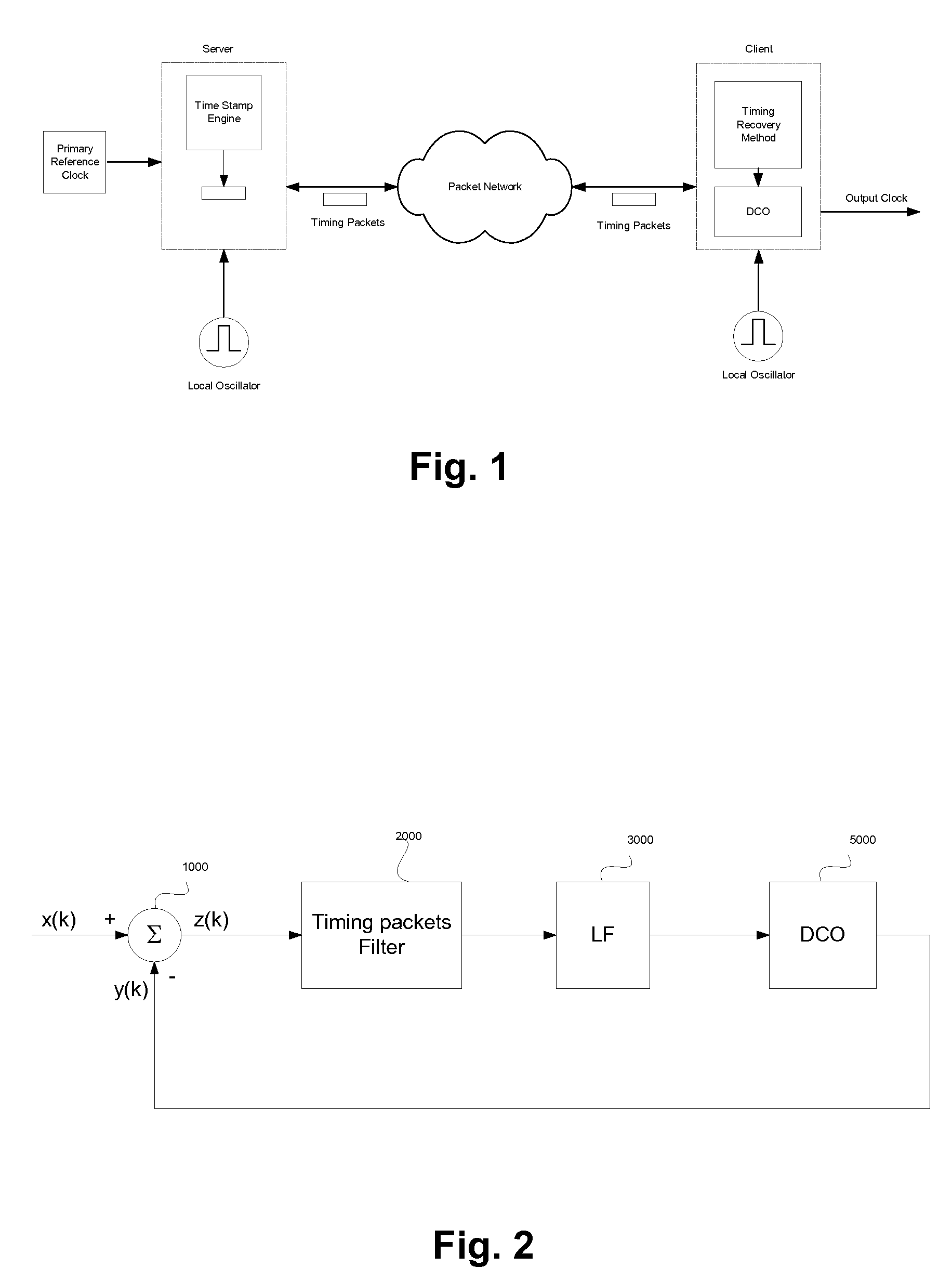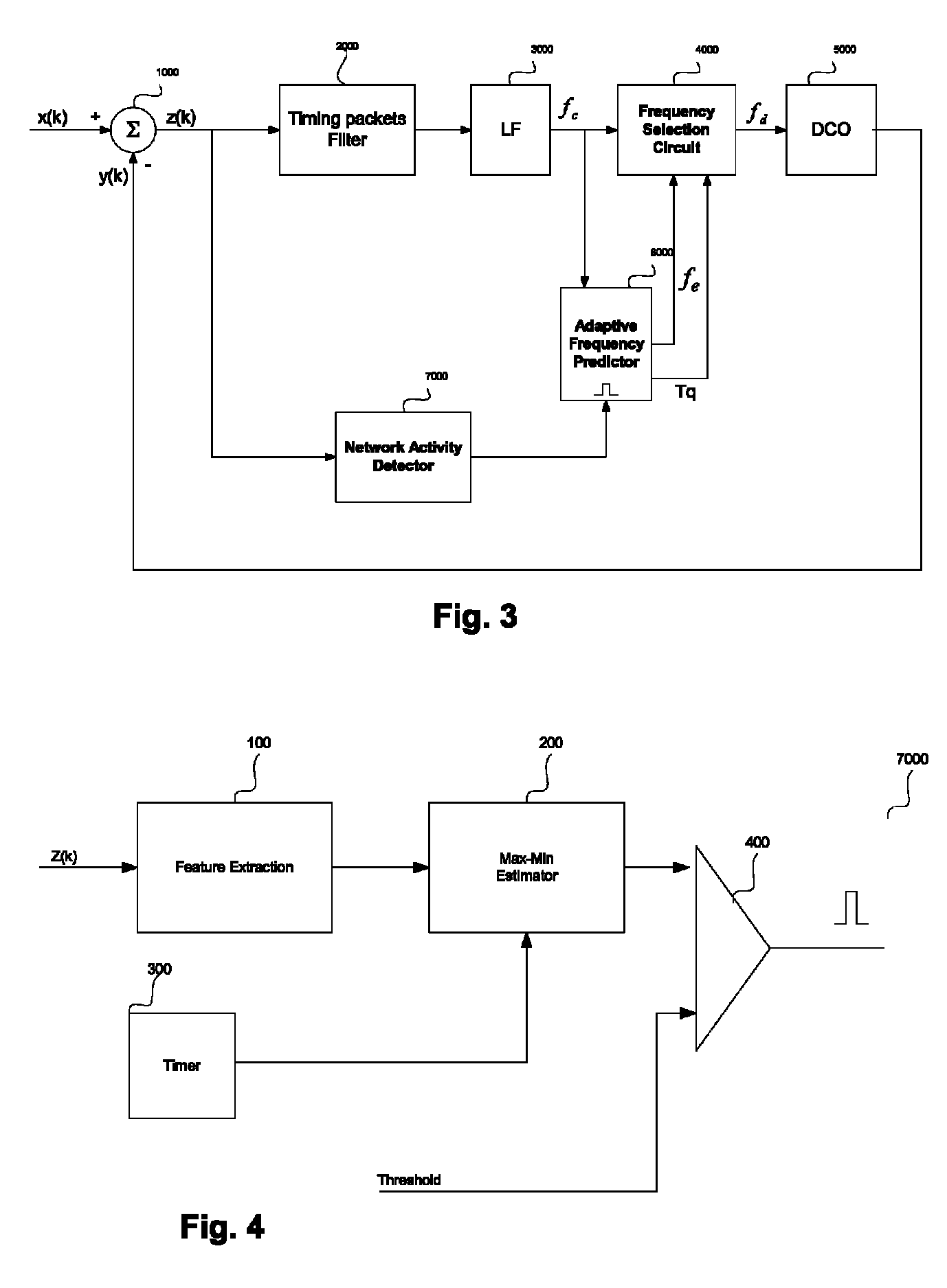Clock recovery method over packet switched networks based on network quiet period detection
a clock recovery and packet switched technology, applied in transmission systems, instruments, transmission systems, etc., can solve the problems of maintaining the same level of synchronization, affecting the reliability of the network, so as to reduce the amount of wander and noise, improve the robustness of network packet delay variations, and reduce the effect of pdv
- Summary
- Abstract
- Description
- Claims
- Application Information
AI Technical Summary
Benefits of technology
Problems solved by technology
Method used
Image
Examples
Embodiment Construction
[0021]In the discussion which follows, the following notation is used:[0022]k is index to packet number.[0023]x(k) represents transmitter time stamp for packet k[0024]y(k) represents transmitter time stamp for packet k[0025]z(k) is the raw delay estimate between transmitter and receiver for timing packet k[0026]w(k) is the filtered raw delay for timing packet k[0027]fd is the DCO update value.[0028]fc is output of the timing recovery algorithm.[0029]fe is the predicted value by time series predictor.[0030]Tp is the prediction time.
[0031]The prior art circuit shown in FIG. 2 comprises a chain consisting of a adder 1000, a timing packet filter 2000, a loop filter 3000 and a digital controlled oscillator (DCO) 5000 with a feedback loop to the adder 1000. The filter 2000 filters out packets with a large PDV.
[0032]FIG. 3 shows a top level block diagram of a timing recovery circuit in accordance with an embodiment of the invention. (z(k)) represents raw delays for timestamp k, calculated ...
PUM
 Login to View More
Login to View More Abstract
Description
Claims
Application Information
 Login to View More
Login to View More - R&D
- Intellectual Property
- Life Sciences
- Materials
- Tech Scout
- Unparalleled Data Quality
- Higher Quality Content
- 60% Fewer Hallucinations
Browse by: Latest US Patents, China's latest patents, Technical Efficacy Thesaurus, Application Domain, Technology Topic, Popular Technical Reports.
© 2025 PatSnap. All rights reserved.Legal|Privacy policy|Modern Slavery Act Transparency Statement|Sitemap|About US| Contact US: help@patsnap.com



